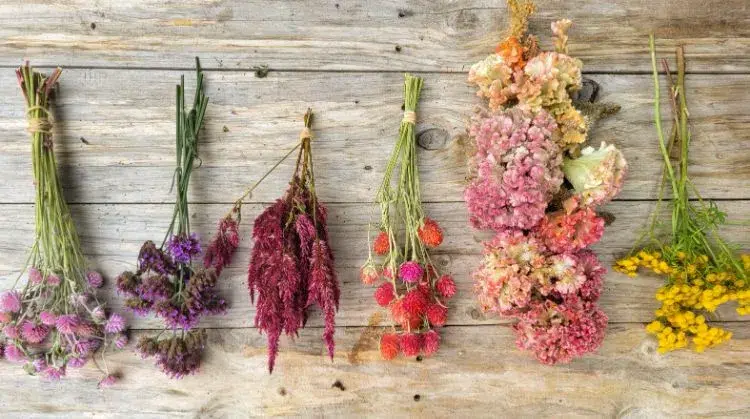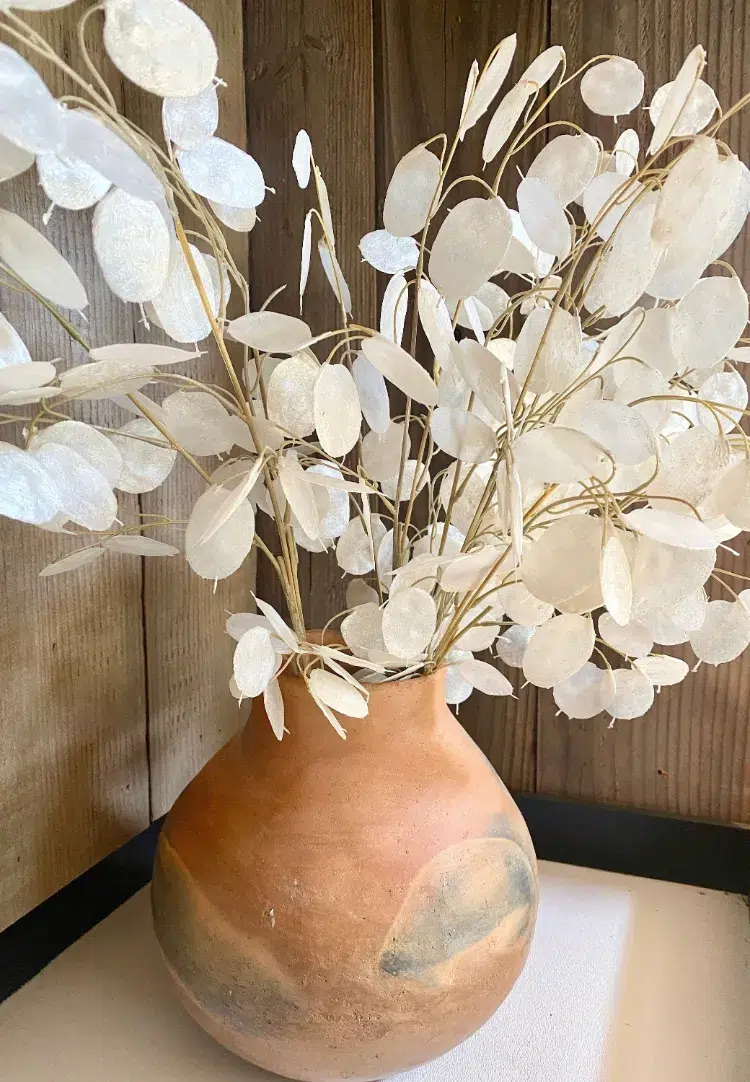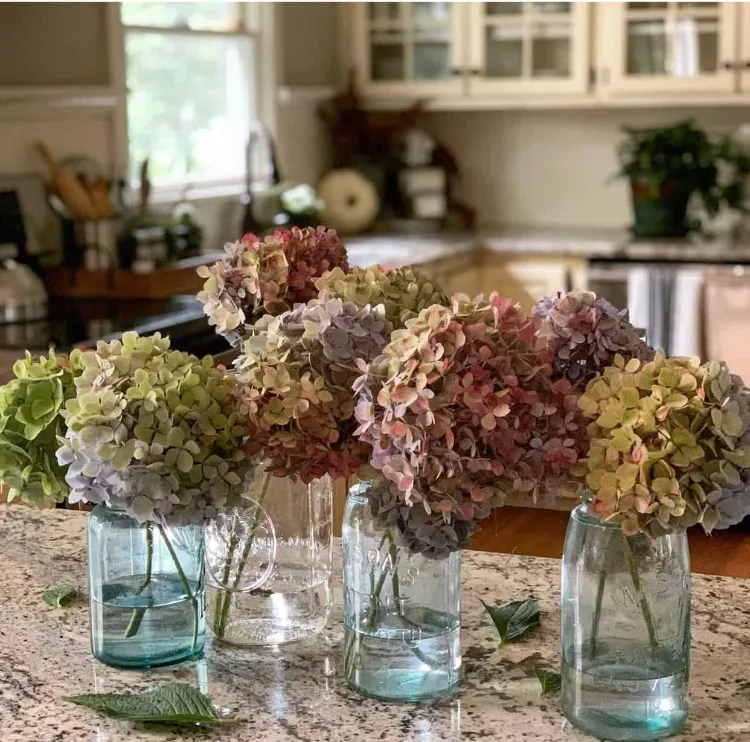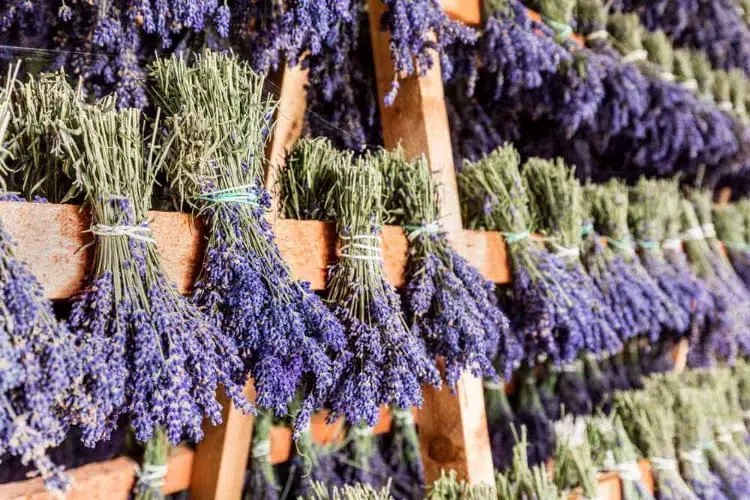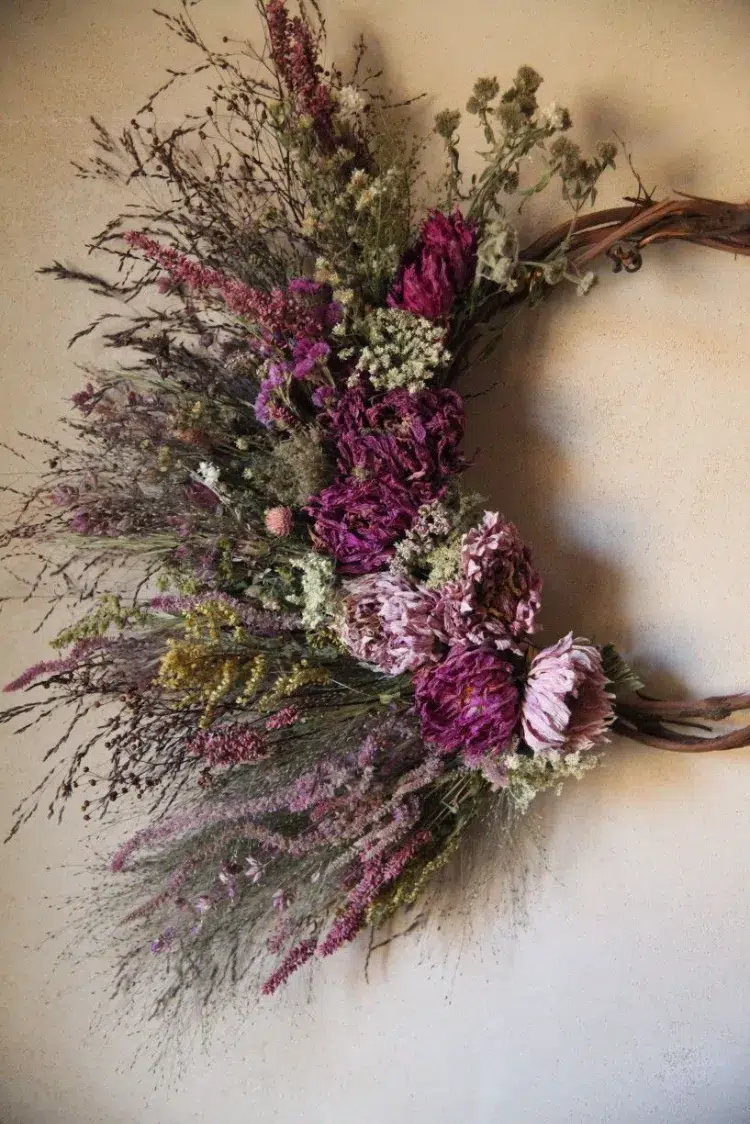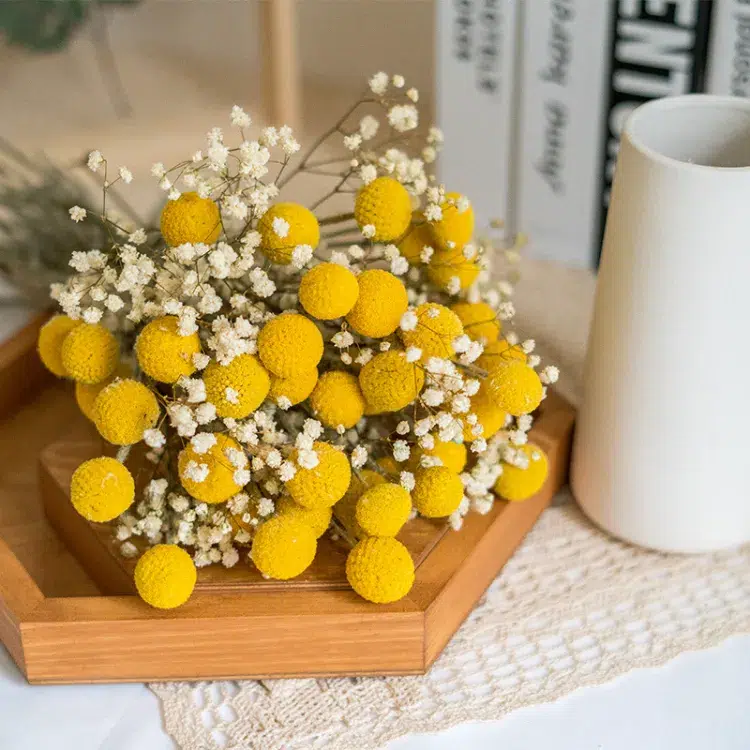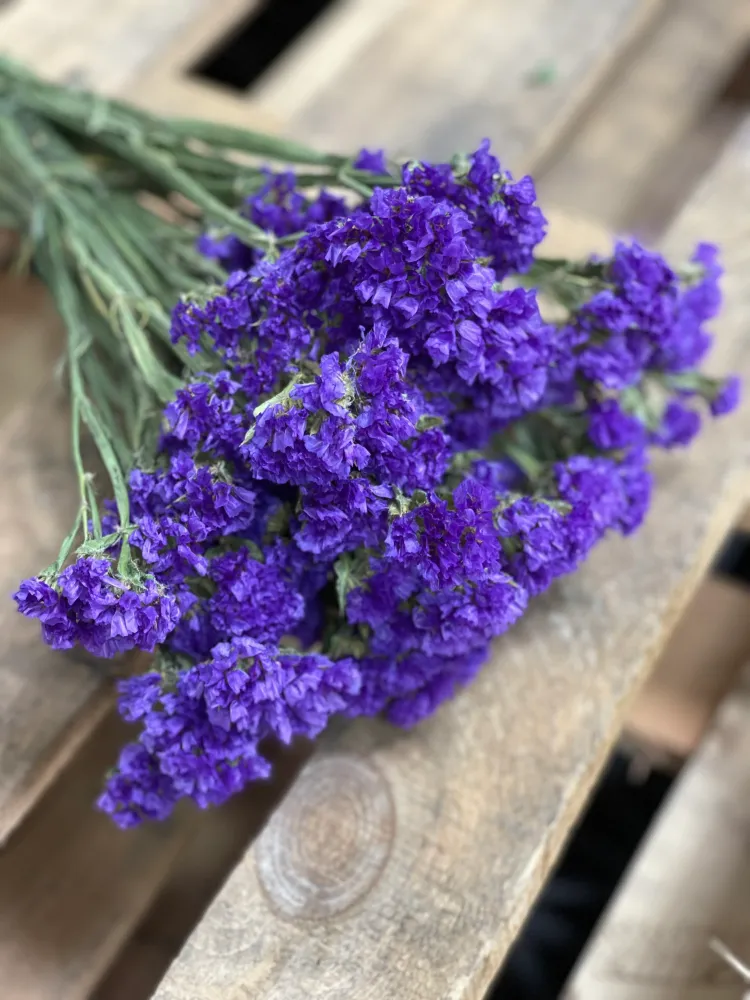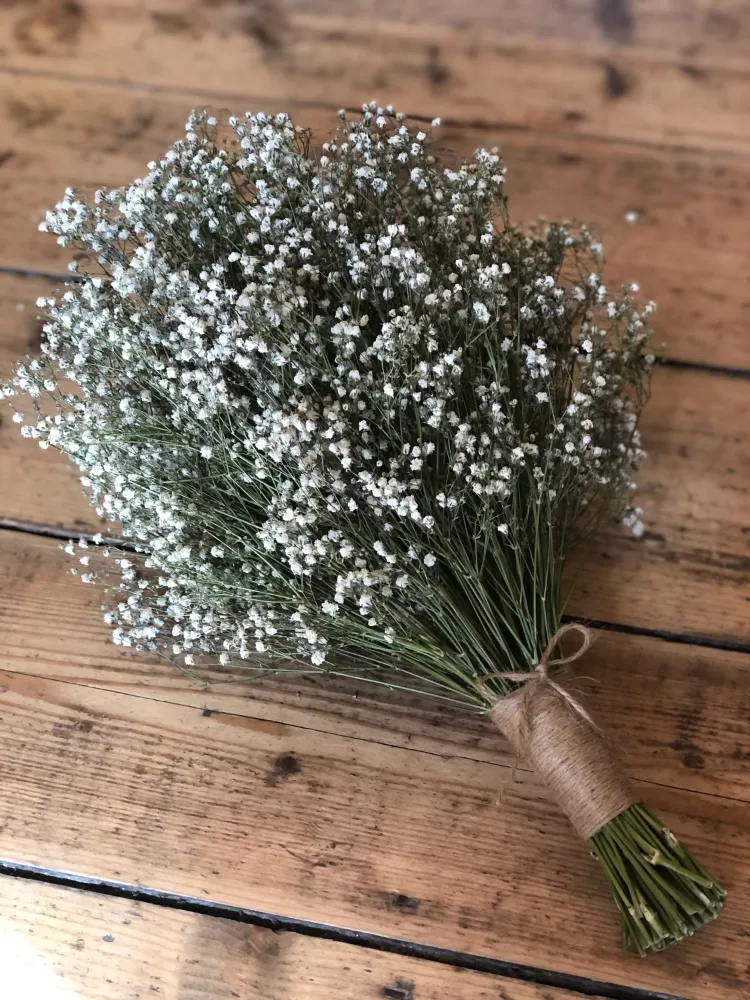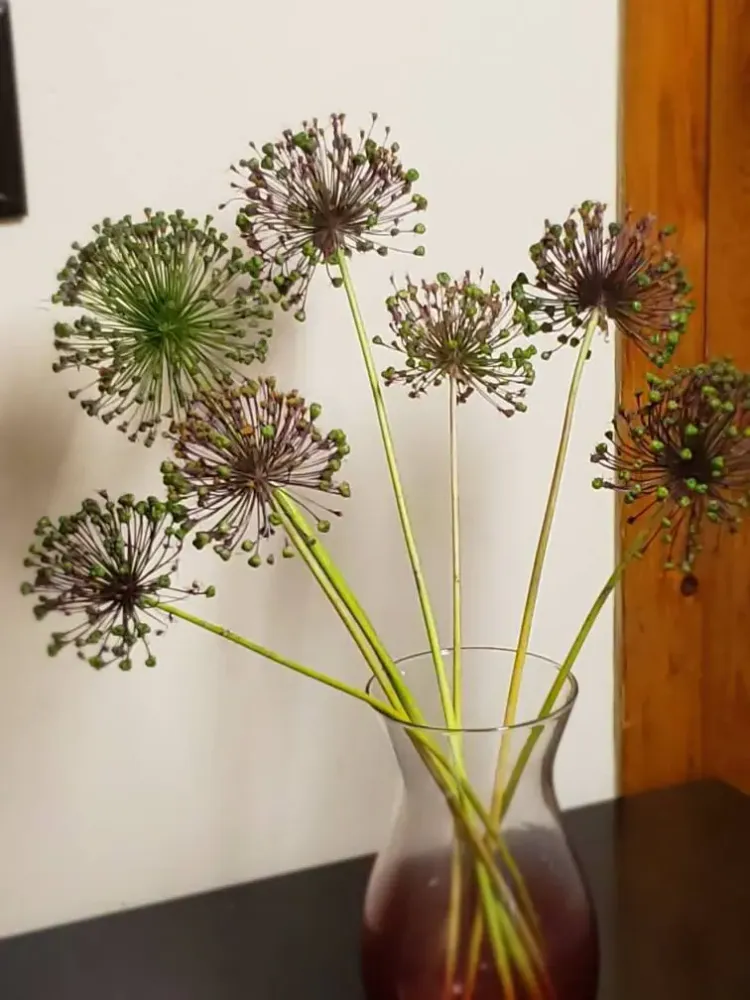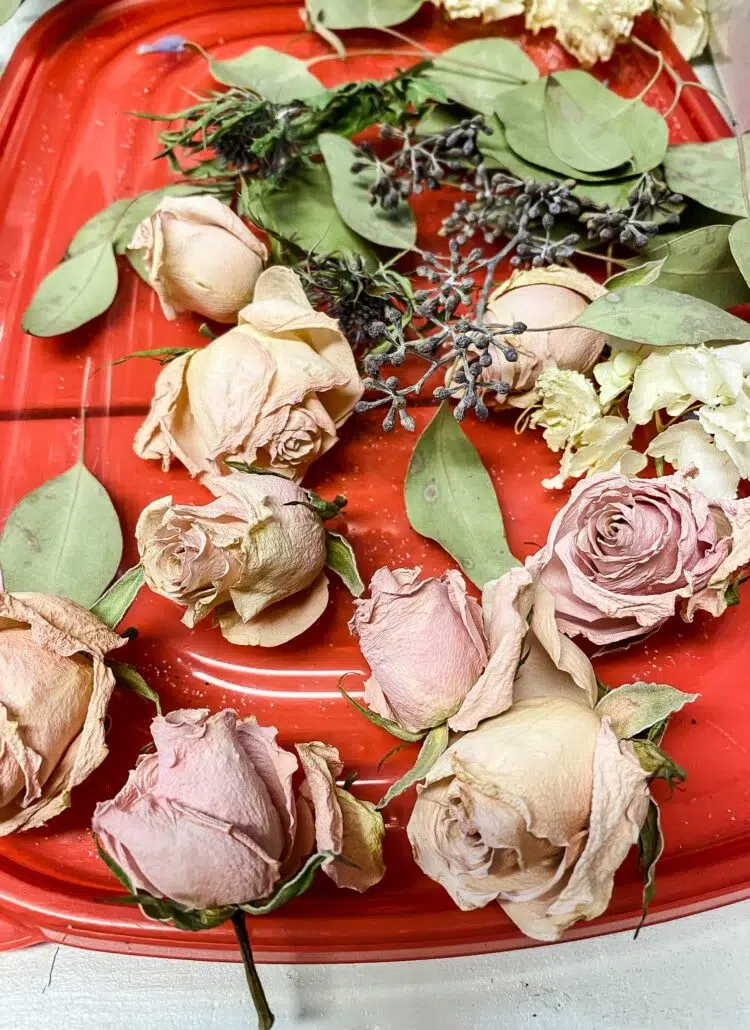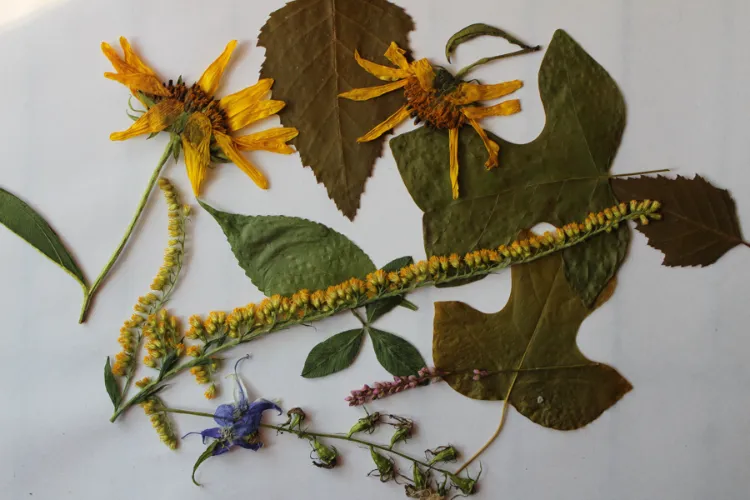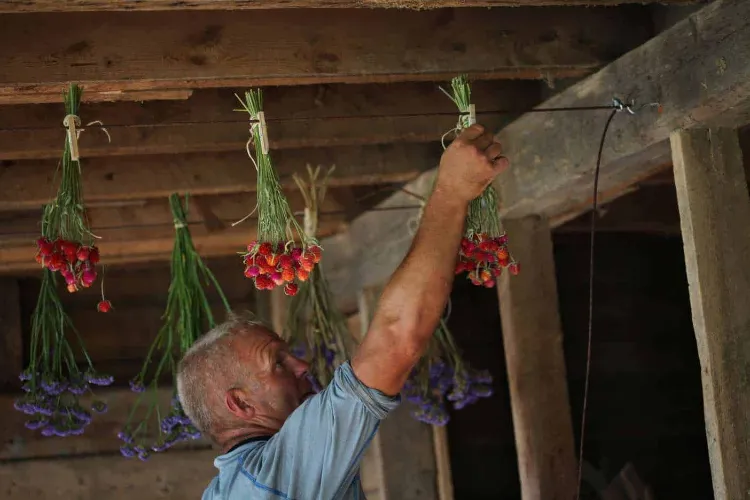Bouquets of dried flowers or a timeless memory placed in paper give the house a special charm. How about taking advantage of your garden to make a beautiful bouquet of flowers and immortalize it forever? Today, the Deavita editorial team is embarking on the enchanting and fragrant adventure of floral memory, telling you which are the best plants and flowers to dry. And what techniques should you use to dry them? Let’s find out!
Which Plants and Flowers to Dry? Top 12 Suggestions for Eternal Beauty
As a bouquet, wreath, dried flowers in a book or a vase filled with dried flowers on the table, they add charm, aesthetics, memories and beauty. This sometimes becomes a hobby for some and a scientific research for others. They therefore study the life of the plant, the preservation of flowers and their fragrance, the flowers that can be dried and the techniques used to preserve them. Not all plants are suitable for herbaria. Can the everlasting purple Queen of the fields, aka Lavender, or the magical hydrangea flower be placed between sheets of paper? Would you like to immerse yourself in the magic of flowers and drying?
Lunaria Annua
Also called Silver Dollar Plant, lunaria is famous for the unusual shapes of its purple flowers and for its ornamental fruits in fall. It is easy to grow, as it can be planted in pots or in beds on the balcony. You will fall in love with its fragrant purple flowers in early summer. Once dried or placed in a vase for decoration, avoid pressing them as they will become more fragile over time.
Also read: Winter Dried Flower Arrangement Ideas – Master the Art of Beautiful Floral Compositions
Immortelle
It is a plant that lends itself very well to drying, since its texture is similar to that of tissue paper, which allows it. Italian immortelle or curry plant loves sun and drought, proudly adorning itself in yellow, orange, white or pink. They are planted in May and harvested in early fall. Arrangements and wreaths made from it will bring an eternal sunny country atmosphere.
Hydrangea
Admire its beauty for 2 years, cut the beautiful flowers and place them in a vase with a minimum of water. You will notice the drying process after 2 weeks. If the hydrangea was white, chances are it will turn brown over time. ‘
Also read: How to dry hydrangeas without losing their color?
Lavender
The queen of the fields and the purple color is here! Lavender is famous for its ability to dry easily and to perfume cupboards and laundry, repelling certain small insects. At the same time, lavender is ideal for making dried bouquets. Lavender’s great advantage over other perennials is its relaxing, unforgettable fragrance.
Physalis
The edible fruit wrapped in a membrane comes directly from Peru for eternity and glory. It can be added to the family of tomatoes and eggplants. It tends to keep its orange color after drying. The fruit is often used as decoration and on cocktails, covered with a cup that dries quickly. Once it has been dried, it can have many uses and is wonderful for fall decorations.
Dahlia
The dahlia is a plant famous for its many beautiful flowers, native to Mexico. You can also find cactus dahlias, lace dahlias or ornamental dahlias. It stands tall, majestic and proud, with a long, straight stem, and the colors… there’s something for everyone.
Roses
Roses are also one of the most suitable flowers for drying, bringing romance and passion across time and space. How to dry rose petals? There are many methods for drying rose petals starting with picking them when they are in full bloom. Roses must not retain any moisture, otherwise they will rot and turn black.
Craspedia
The yellow beauty of dried flowers that can brighten up your dried flower bouquet in the most elegant way. This Australian plant has solid green flowers with large yellow pompoms. It is not extremely resistant to negative temperatures, it is planted in May and harvested in summer and fall.
Statice
Statice will brighten up your garden with abundant blooms in shades of blues and purples. It produces inconspicuous and small flowers that do not fade during drying and can be admired for a long time.
Peony
Who does not know the beauty of the peony, sung in prose and literature? And for good reason, the colors it offers are numerous, because they can be combined with other beautiful flowers, such as hydrangea for example, in a beautiful bouquet. After grouping them with other multicolored flowers, hang them upside down in a dark room. Humidity is bound to be low, as the process takes a month.
Gypsophila
Flower arrangers are very familiar with “baby’s breath”. Its beauty lies in the finesse and delicacy of its petals and in the majesty of its curved stems. A very suitable flower to consider for decorating.
Allium
The pink or purple pompoms of ornamental garlic are a dry plant that is well suited for this purpose. The pompoms can be dried on the spot before they are even harvested with the help of hairspray. Spray them and they’ll remain eternal and discreet in the array of pink or purple beauties.
What Are the Best Drying Techniques for Plants and Flowers?
Flower-drying methods and techniques go through different time spans, years, technologies and evolutions. Decorators and flower lovers use techniques such as drying rose petals in the microwave, in books, or using glycerine and floral wax. Will you choose the technique that does not require special effort by gathering the flowers in the shape of a bouquet and placing them with the stems and peduncles upwards or will you place them in the air? Here is information on all these techniques.
Dry Flowers and Plants in the Microwave
Microwave flower drying is suitable for lavender, peony, rose and chamomile. Flowers with thicker petals are not recommended for the microwave. If you notice that your petals are denser, you need to let them dry for at least 6-7 minutes.
For normal thickness and height of your flowers, the procedure can take up to 2-3 minutes, arranging the flowers and petals and spreading them evenly on paper. Then cover them with another sheet of paper and place them in the microwave oven. Use normal power, carefully monitoring the process. Repeat the operation as many times as necessary for optimal results.
Air-Drying Flowers by Suspending Them
For this procedure and technique, leading florists advise drying different types of flowers separately. Hydrangeas and peonies, for example, should be dried one after the other. Ornamental garlic, lavender and roses also dry well in the open air, and you, dear aesthetes of beauty, will need a dark, dry place to store your pretty bouquets. It’s best to cut off the leaves as soon as you notice that they’ve bloomed profusely, leaving only the flower or at most 2 or 3 leaves around it.
Then take 5-10 and tie them to the base of the small bundles with a rubber band to prevent them from falling apart over time. Don’t tighten the string, and hang bouquets upside down to prevent moisture from accumulating. Space the bouquets at least 4inches/10 cm apart using clothespins. Let them dry for about a month. If the petals are thicker and denser, you can leave them for a week longer for best results.
Drying Plants and Flowers in Books
The romantic method of drying flowers is so famous that it involves placing them in books. This technique is used to create herbariums. If you choose this method, use rice paper so your flowers don’t get stained with ink.
Use a book with unglazed pages, as rough paper absorbs ink much better. Place the beautiful flowers on pages not far apart from each other and place the book horizontally. The drying period can last about 2 weeks.

